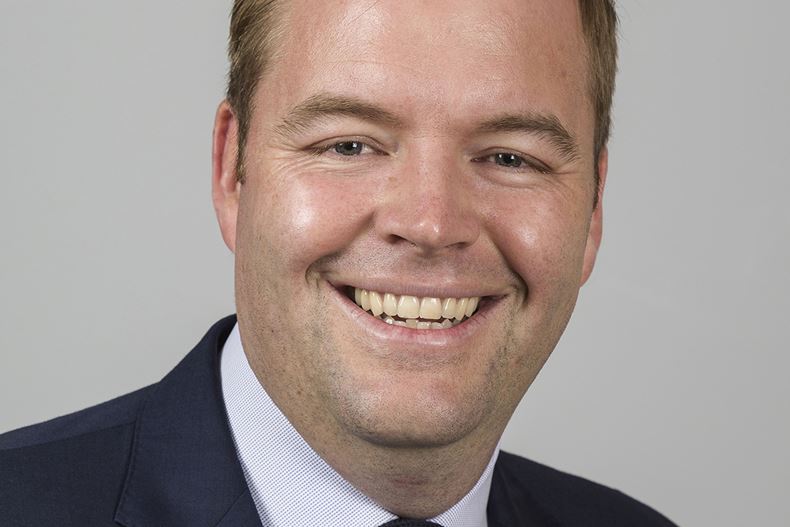Ninety One expects strong SA fixed income returns in 2023

Ninety One believes emerging markets, including South Africa, are in a ‘sweet spot’ due to slowing inflation worldwide, rate hikes nearing a peak, and China reopening its economy.
‘With inflation decelerating across the world, monetary policy cycles nearing an end, and China reopening its economy, we are constructive on the outlook for emerging markets,’ according to Ninety One co-head of South Africa and Africa fixed income Peter Kent (pictured below) and Ninety One fixed-income portfolio manager Adam Furlan.
‘We hold a similar view on monetary policy locally, and combined with continued fiscal consolidation, we expect strong returns from South African fixed-income assets in 2023,’ they wrote in Ninety One’s Taking Stock Summer 2023 magazine.
‘Fiscal revenues should remain healthy as we anticipate that commodity prices will stay elevated. This should allow National Treasury further to consolidate the debt burden over the coming year,’ Kent sand Furlan said.
In 2022, South African government bonds returned 4.3%, marginally behind cash.
‘Despite yields on the 10-year benchmark bond rising 1.1% over 2022, the income protection inherent in the asset class shielded investors. South African government bond yields rose 0.3% less than their emerging market peers over the year. This is a significant outperformance, given the 1.4% rise in emerging market yields,’ they wrote.
They added that an income return of 9.7% in 2022 provided South African government bonds with a significant buffer against a 5.5% loss of capital, leaving a combined return of 4.2%. Kent sand Furlan wrote that the outlook for the year looked promising, with local bond yields starting 2023 at 10.9%.
South African headline inflation peaked in July 2022 at 7.8% before falling to 7.2% in December.
‘We see headline inflation averaging 5.4% in 2023 owing largely to declining petrol prices and a deceleration in food inflation. The South African Reserve Bank (SARB) proactively managed inflation over 2022. It started hiking rates early. At 7.25%, the repo rate reflects a more neutral policy setting (relative to expected inflation),’ they wrote.
With the inflation picture improving, Ninety One believes the SARB is near the end of its hiking cycle, Kent sand Furlan added. Ninety One believes the local growth outlook is ‘difficult’, with consumer sentiment slowing after a year of rate increases and high inflation.
‘We remain optimistic about private investment in the energy sector on the back of structural reform underpinning our 1% GDP forecast for 2023. As we expect commodity prices to remain elevated, we see fiscal revenues performing well. This should allow National Treasury further to consolidate the debt burden over the coming year,’ they wrote.
Kent and Furlan (pieced below) said the local economy showed remarkable resilience despite record power outages in 2022.
But with load-shedding set to continue, this undoubtedly places a cap on sentiment and our potential growth,’ they added.
On the positioning of the R22.3bn Ninety One Diversified Income fund, Kent and Furlan said that with global risks subsiding, local inflation likely peaked in the third quarter of 2022, and local political risks abated post the ANC elective conference, they are optimistic about bond market returns.
‘Hefty income on the table, combined with dynamic portfolio construction, will continue to help protect capital against global monetary policy and growth volatility and continued load shedding locally,’ they added.
‘We remain overweight the 10- to 15-year sector of the curve relative to longer-dated bonds as valuations look most attractive in this space. These shorter-dated bonds should further benefit from a slowing or pause in the monetary policy cycle over the year’s first half,’ Kent and Furlan said.
‘With yields on credit looking relatively less attractive, given where government bond yields are, we remain underweight investment-grade credit in the portfolio. However, we continue to look for yield-enhancing opportunities in high-quality counterparties,’ they added.
Underweight currency exposure
The portfolio has an underweight currency exposure because of the waning US dollar momentum and elevated terms of trade supporting the rand.
‘Yields on offshore credit, however, look attractive,’ they added.
Kent and Furlan said they held material exposure to high-quality South African counterparties issuing in dollars and US investment-grade credit. This portion of the portfolio yields 6.3% in US dollars.
‘Turning to listed property, balance sheets are in a healthier position post-Covid-19, and the sector is paying out dividends again. We marginally increased our exposure during the fourth quarter of 2022, further reducing our underweight. As we expect a slowdown in economic growth in response to global monetary policy tightening, we remain more constructive on the prospects for South African government bonds relative to listed property,’ they added.

